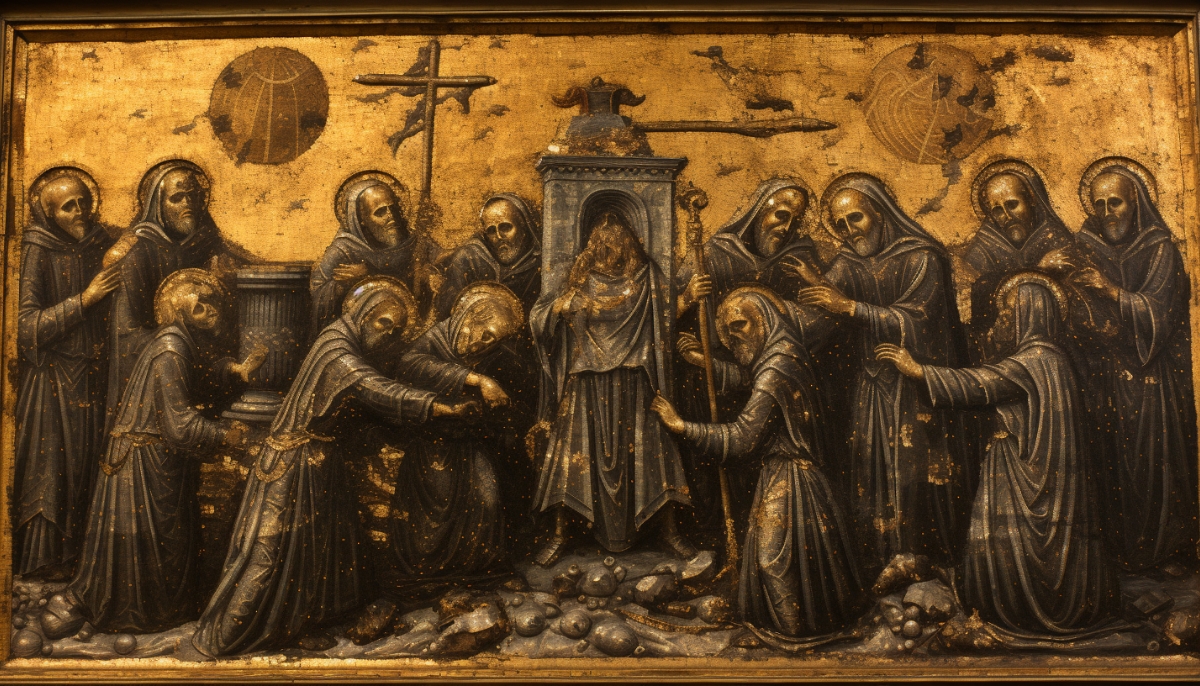What if the Plague of Justinian had remained a dormant threat, never erupting into the pandemic that reshaped the Mediterranean world?
This article will navigate the immediate repercussions for the Byzantine Empire, untouched by the plague’s deadly grasp.
We’ll then cast our net wider, examining the ripple effects across Western Europe, Persia, and the nascent Islamic world.
Finally, we’ll delve into the enduring cultural, religious, and linguistic impacts that could have rippled through the Mediterranean basin.
Join us as we unravel the threads of history and weave a narrative of what might have been—a world where the Plague of Justinian is just a whisper of possibility.
The Devastating Effects of the Justinian Plague
The Justinian Plague was not merely as a disease but as a catalyst for monumental change. Let’s delve into the profound consequences of this ancient pandemic.
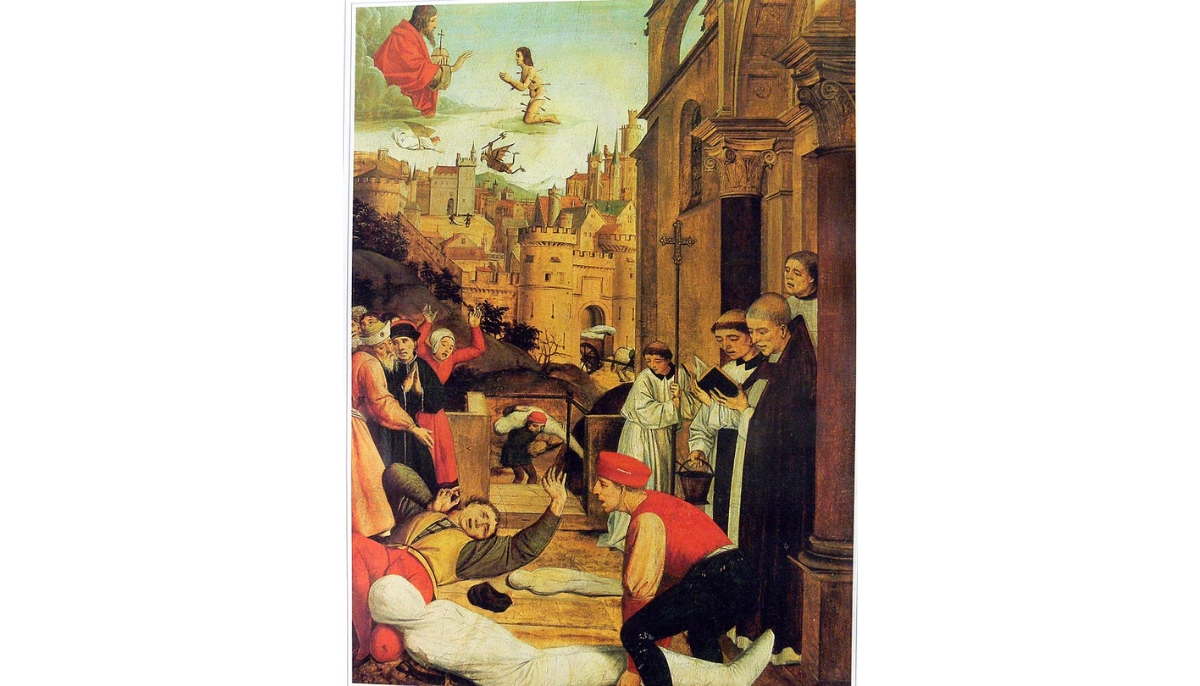
Population Decline and Economic Collapse
In the mid-6th century, the Justinianic Plague swept through the Mediterranean, Europe, and the Near East, leaving a trail of devastation in its wake.
Constantinople, the heart of the Byzantine Empire, was particularly hard hit, with estimates suggesting that up to a fifth of its population succumbed to the disease.
The plague, caused by the bacterium Yersinia pestis, originated in or near the Tian Shan mountain ranges and traveled through grain ships infested with rats, arriving in Roman Egypt in 541 AD. It spread like wildfire, reaching every corner of the empire by 543 AD.
The economic repercussions were immediate and severe. With a significant portion of the population wiped out, agricultural production plummeted. Grain prices soared as the workforce dwindled.
Political and Military Setbacks
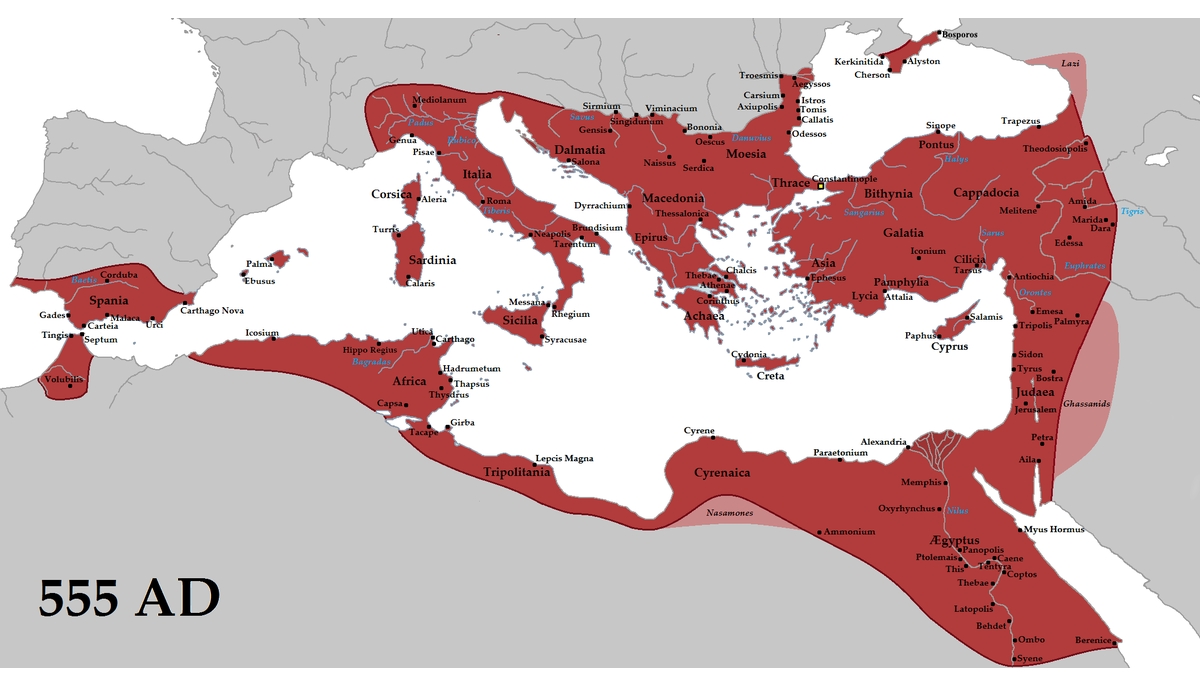
Politically and militarily, the plague struck the empire’s zenith, undermining its power at a critical juncture. Justinian’s vision of a restored Roman Empire was abruptly challenged.
The plague decimated the Byzantine army, reducing its capacity to maintain, let alone expand, the empire’s territories.
The military, which had been on the cusp of reuniting the Western and Eastern Roman Empires, grappled with reduced manpower and a weakened grip on its conquests.
The Lombards’ invasion of Northern Italy in 568, just a few years after the plague’s peak, marked the beginning of the end of the empire’s control over the region.
Cultural and Religious Shifts
The cultural and religious impacts of the Justinian Plague were equally transformative. The disease did not spare the intellectual or spiritual leaders of the time, leading to shifts in cultural practices and religious observances.
The plague’s ravages were recorded by historians like Procopius and John of Ephesus, painting a picture of a society in turmoil.
The loss of life led to a reevaluation of religious beliefs, with some seeing the plague as a divine retribution, which in turn influenced the spiritual and cultural ethos of the empire.
The World Without the Justinian Plague: Alternate History
Let’s rewind history and imagine a scenario where the Justinian Plague never ravaged the Byzantine Empire. What immediate effects would this alternate reality hold?
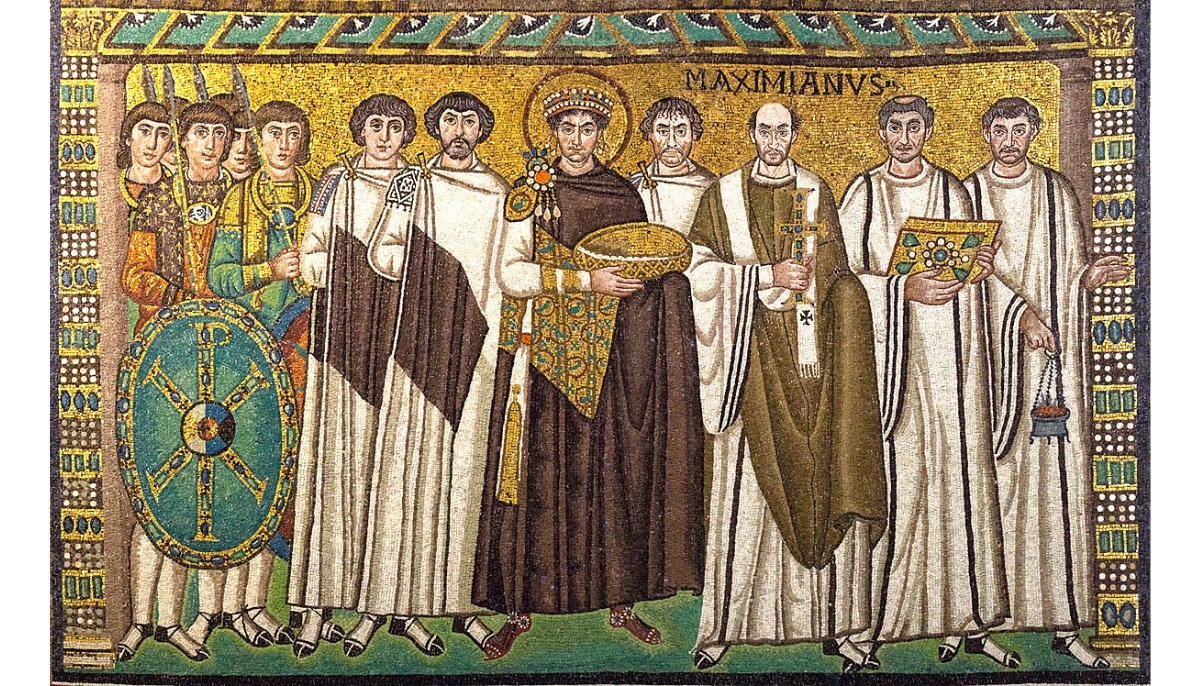
The Byzantine Empire’s Continued Expansion
Without the plague, the Byzantine Empire would have likely sustained its momentum. With a robust population and a full treasury, Justinian’s reconquest of the Western provinces could have been complete and lasting.
In this plague-free timeline, the immediate effects on Western Europe would have been profound. The Lombard invasion of Italy might have been just a historical footnote, repelled by the unweakened armies of Rome.
The Mediterranean basin, instead of fragmenting into a patchwork of barbarian kingdoms, might have remained a Roman lake, with the eagle standard flying from the pillars of Hercules to the Euphrates.
no Byzantine Empire?
The term “Byzantine” itself is a later historical construct. It might never have been coined, as the empire would have maintained its Roman identity with no need to distinguish between the East and West.
The legacy of Roman law, governance, and culture would have continued to shape the development of the West, potentially delaying or even preventing the feudal fragmentation that characterized our own Middle Ages.
The term “Western Europe” itself might have been an anachronism, as the region could have remained politically and culturally tied to the Eastern capital.
The Ripple Effects on Global History
The absence of this microscopic terror would have sent shockwaves through the annals of history, altering the course of empires and religions.
The Survival of the Sasanian Empire
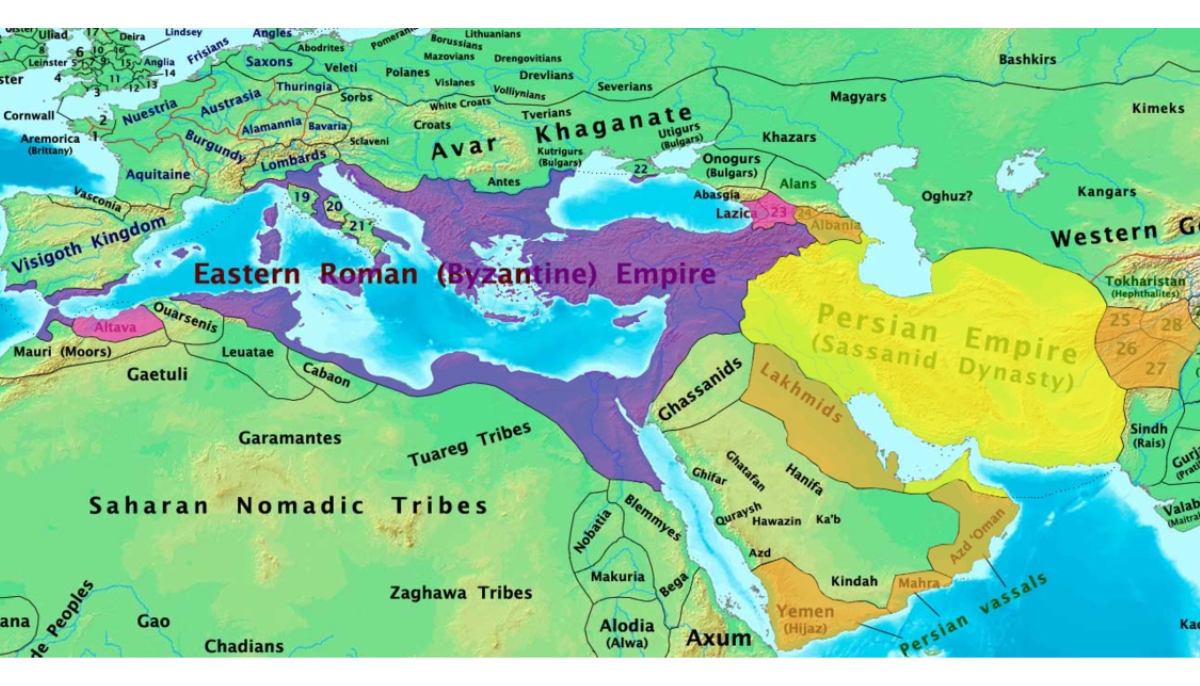
Without the weakening effect of the plague on both Byzantine and Sasanian forces, the epic rivalry between these two ancient superpowers might have taken a different turn.
The Sasanian Empire, not facing the internal decay and external pressure from a plague-strengthened Byzantine Empire, could have held its ground.
Picture a vibrant Sasanian realm, fostering advancements in science, art, and philosophy. The Middle East could have remained a chessboard for the power plays between a robust Rome and a resilient Persia.
The Non-Emergence of Islam
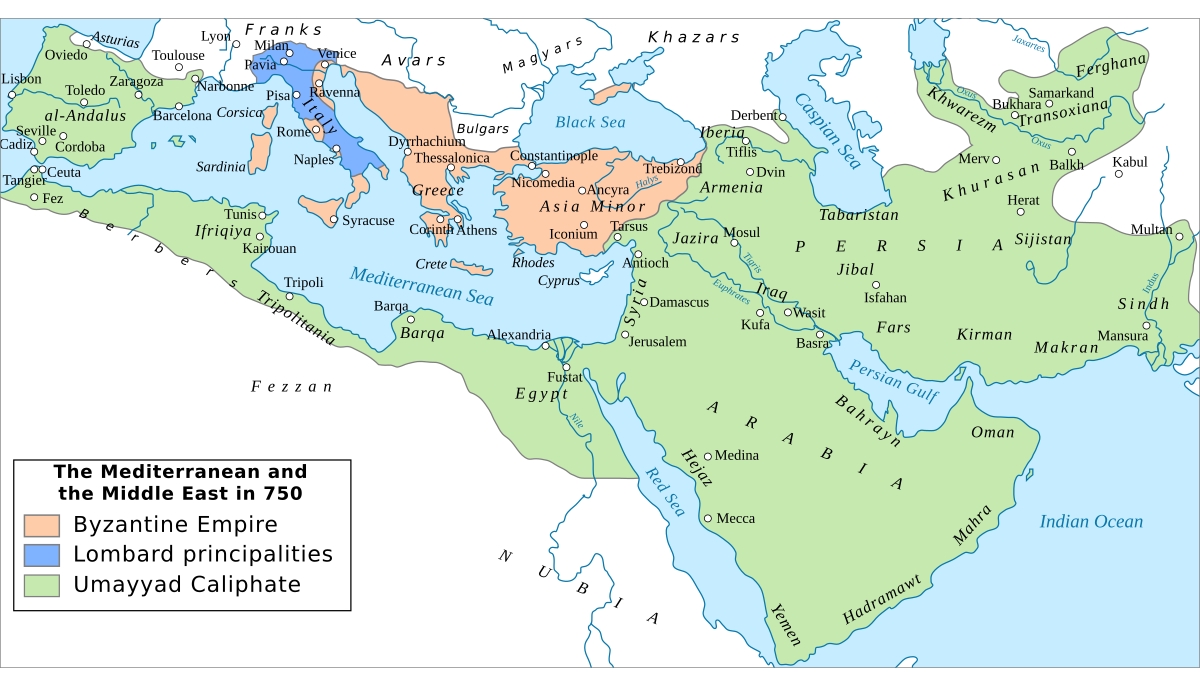
The rise of Islam was a defining moment in global history, but in our alternate timeline, the Arab conquests might have faced a formidable barrier in the form of a strong, healthy Byzantine and Sasanian front.
Without the power vacuum caused by the plague, the spread of Islam could have been contained or even prevented, leaving the Arabian Peninsula as a crossroads of cultures rather than the birthplace of a new world religion.
The global religious landscape would be unrecognizable, with Christianity and Zoroastrianism remaining the dominant faiths in a vast stretch from the Atlantic to the Indus.
The Long-Term Linguistic Implications
In a world where the Justinian Plague is just a myth. The modern European linguistic map would have been vastly different.
The Dominance of Latin
In our alternate, plague-free timeline, the depopulation and economic downturn that fragmented Europe never happened. Latin, the lingua franca of the Roman Empire, wouldn’t have fractured into the Romance languages we know today.
Instead, it might have continued to evolve smoothly without the abrupt regional variations that arise in isolation.
Picture a Europe where Latin is spoken from the sun-kissed vineyards of Tuscany to the bustling markets of Paris, albeit with a local flair.
Spread of Greek
Greek, too, would have held its ground as the language of the Eastern Empire, possibly even spreading further West as the influence of Constantinople expanded.
The intellectual pursuits in philosophy, science, and the arts would have continued to be penned in the classical languages, making the works accessible across a vast, educated empire.
The Renaissance scholars would have had less of a need to ‘rediscover‘ ancient texts, as they would have been part of the living, breathing cultural fabric of the empire.
The Alternate Trajectory of Christianity
In a world where the Justinian Plague is merely a “what if,” the trajectory of Christianity—and indeed all religions across the Mediterranean and the Near East—takes a sharp turn.
Preservation of Eastern Christianity
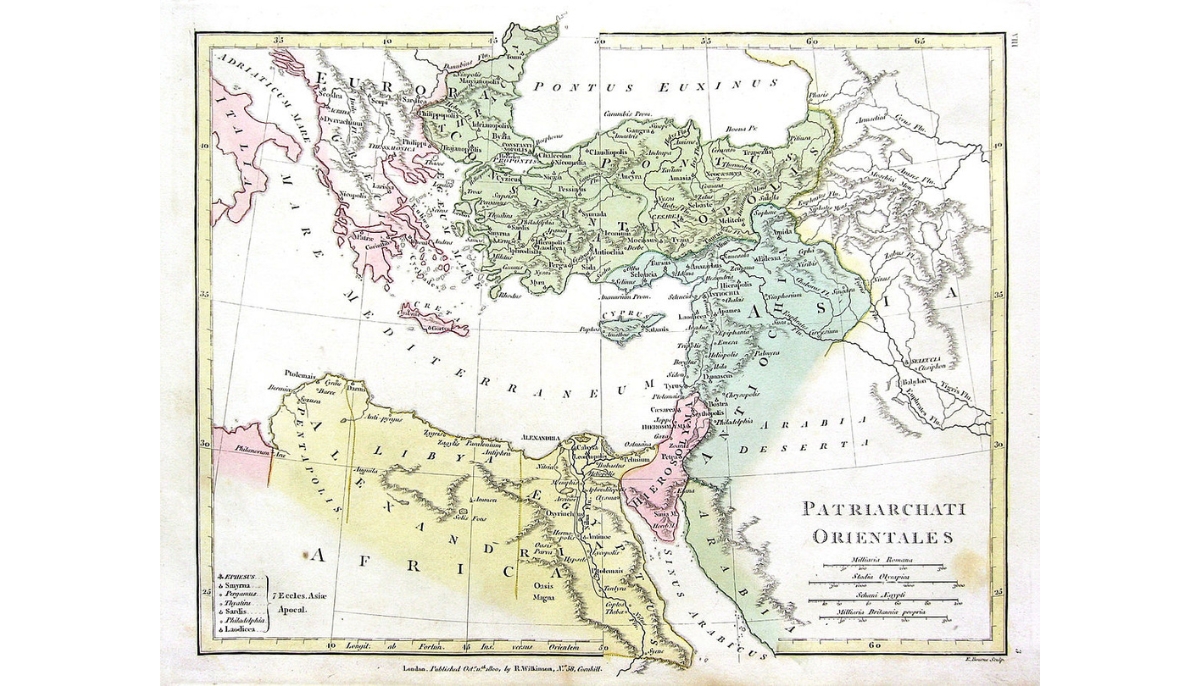
Without the Battle of Yarmouk and the subsequent rise of Islam, the Christian strongholds in Northern Africa and the Middle East would likely have remained unchallenged.
The Copts in Egypt, along with other Eastern Christian sects, might have continued to flourish, deeply entrenching their traditions and beliefs.
Entrenchment of the Pentarchy
In this alternate history, the Pentarchy—Justinian’s vision of a united Christendom with the five patriarchal sees of Rome, Constantinople, Alexandria, Antioch, and Jerusalem—could have remained influential.
These centers of Christian thought and governance would have been the powerhouses of religious development, guiding the evolution of Christian doctrine without the challenge of a new, dominant faith.
In this alternate timeline, the religious landscape would be a mosaic of Christian sects, each with its own history and influence, contributing to a rich tapestry of beliefs within a framework of overarching Christian unity.
Without the centralization of power and wealth in the Roman Catholic church throughout the Middle Ages, would the Protestant Reformation have occurred?
The changing role of Islam
Initially, Islam was perceived by some as a heretical Christian sect. In our hypothetical scenario, without the military and political might to spread rapidly across regions, it might have remained a localized belief system, potentially evolving into another branch of Christianity.
This could have led to a more diverse Christian world, with a spectrum of beliefs and practices under the broad umbrella of a unified church.
The absence of a powerful Islamic caliphate would mean that the religious map of places like Egypt, Syria, and the Maghreb would look vastly different.
Understanding the Fragility of Historical Progression
Our journey through this alternate timeline underscores the fragility of historical progression. The absence of a single event—the Justinianic Plague—could have dramatically reshaped the world.
Empires that fell might have stood; religions that spread might have remained regional; languages that diversified might have stayed unified.
It’s a humbling reminder that history is not a series of inevitable events but a complex tapestry woven from threads that could have been snipped at any moment, altering the entire pattern.
Interested in more Byzantine Alternate History? Check out:
